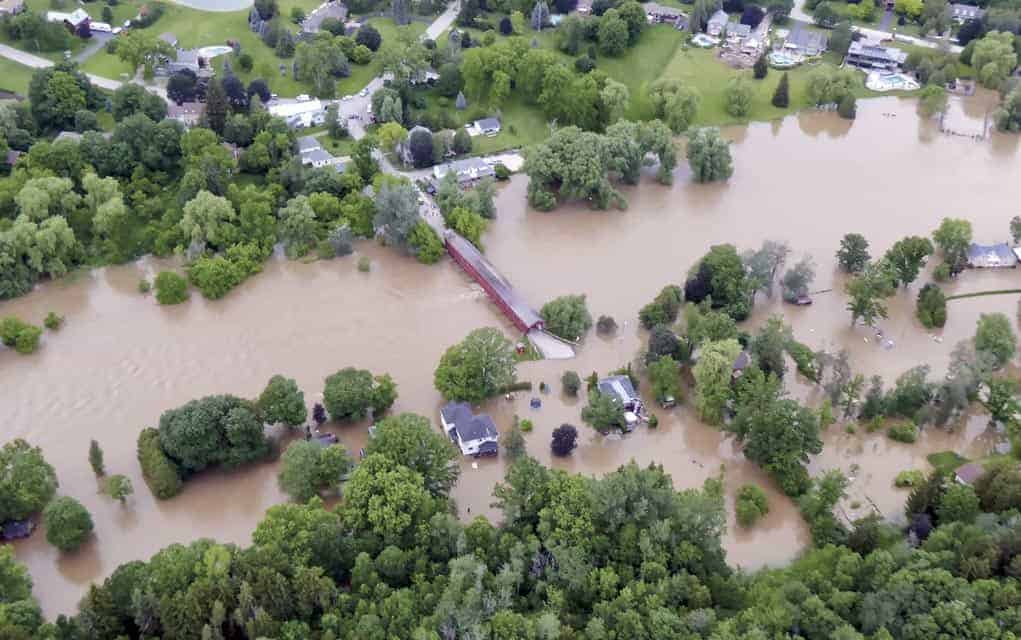Woolwich is still tallying up the damage from a flash flood that struck much of the township last week, leaving behind wet basements, washed-out roads and a great deal of flotsam.
Heavy rainfall early on the morning of June 23 in the north part of the Grand River watershed caused flooding downstream, including in Elmira, St. Jacobs, Conestogo, Breslau, Floradale and, in particular, West Montrose. Areas just to the north, including Drayton and Harriston saw worse flooding, with widespread impacts on homes and businesses.
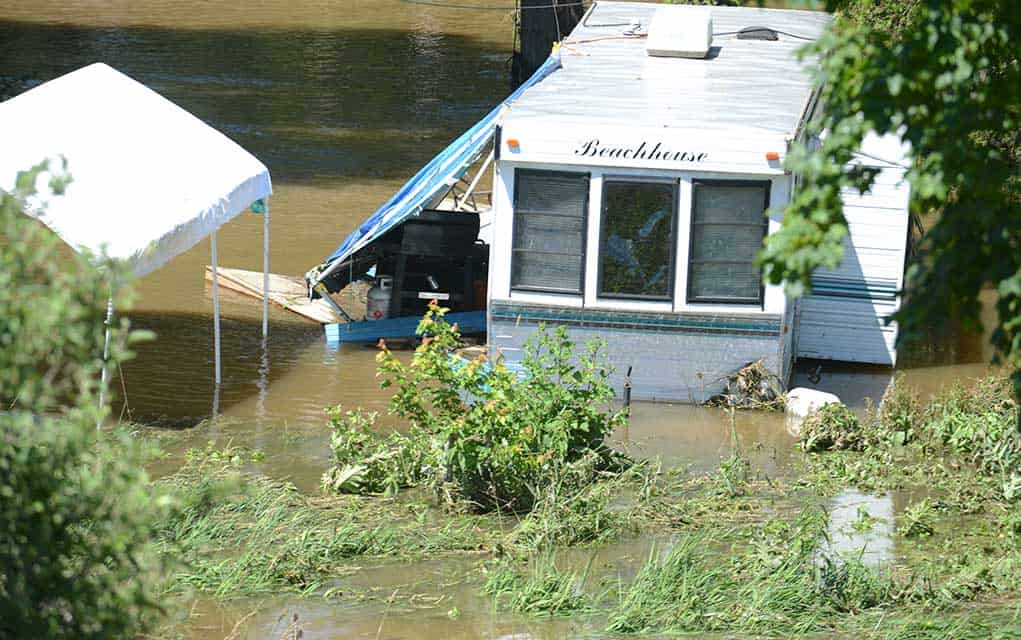
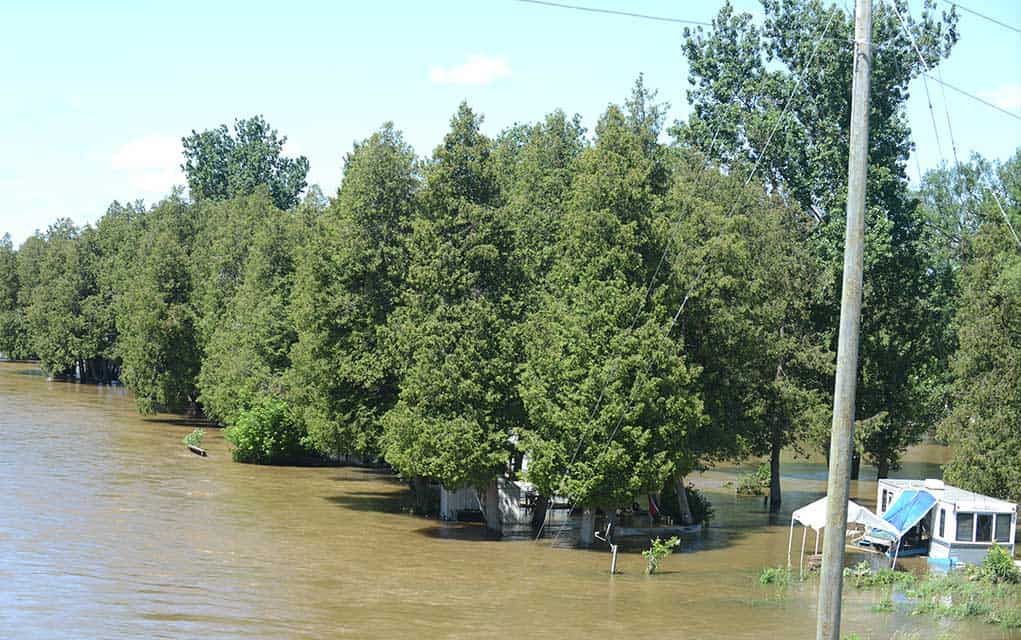
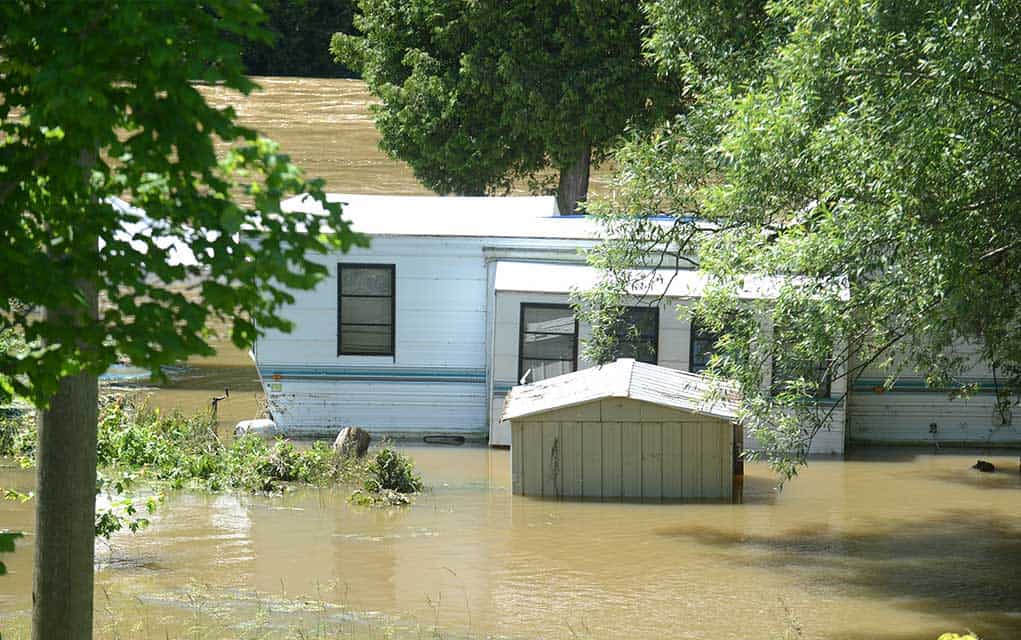
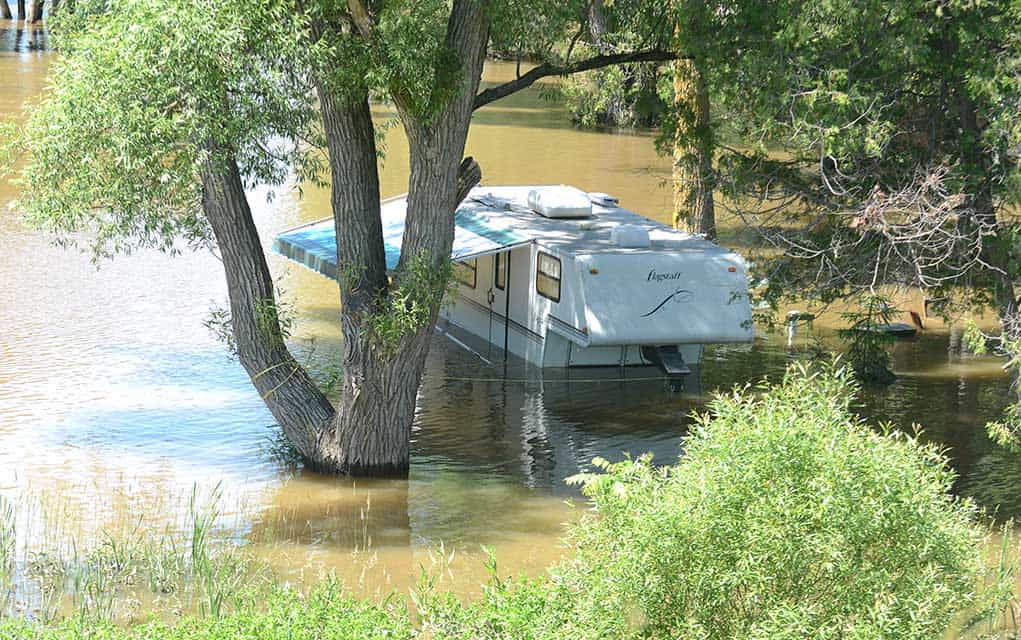
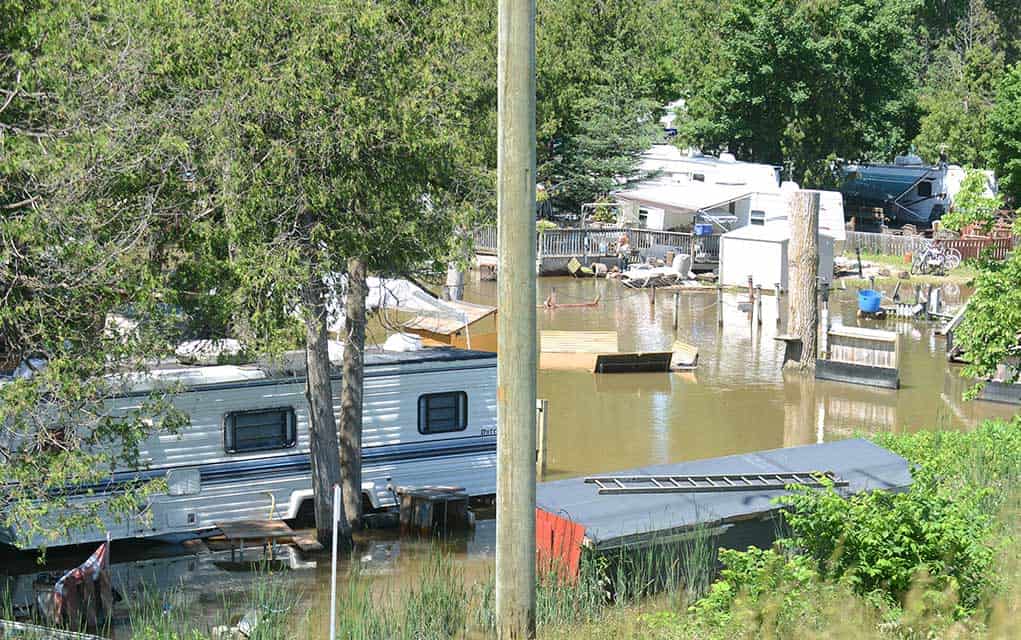
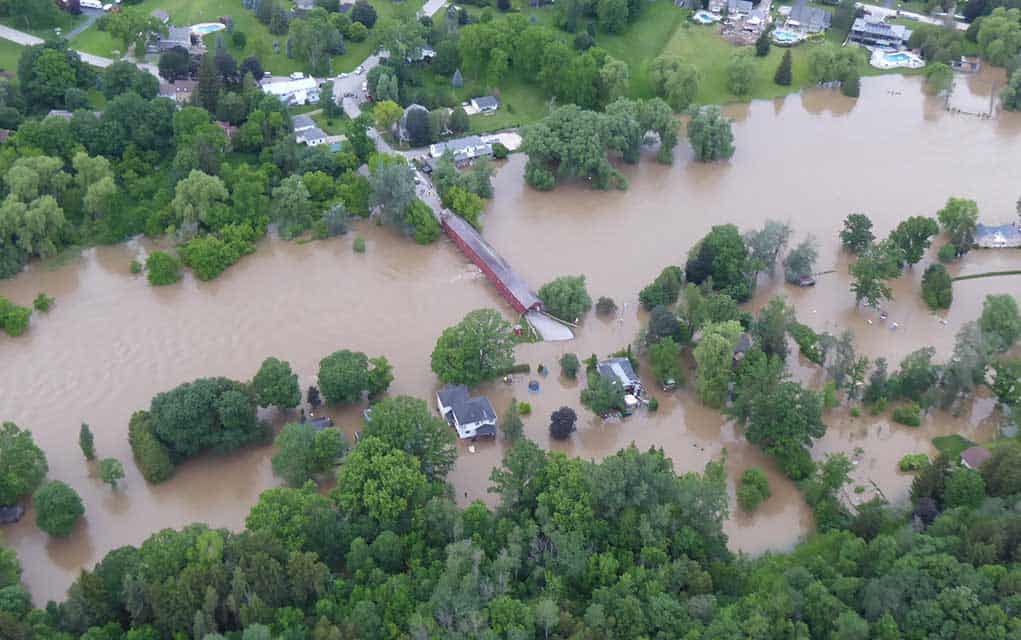
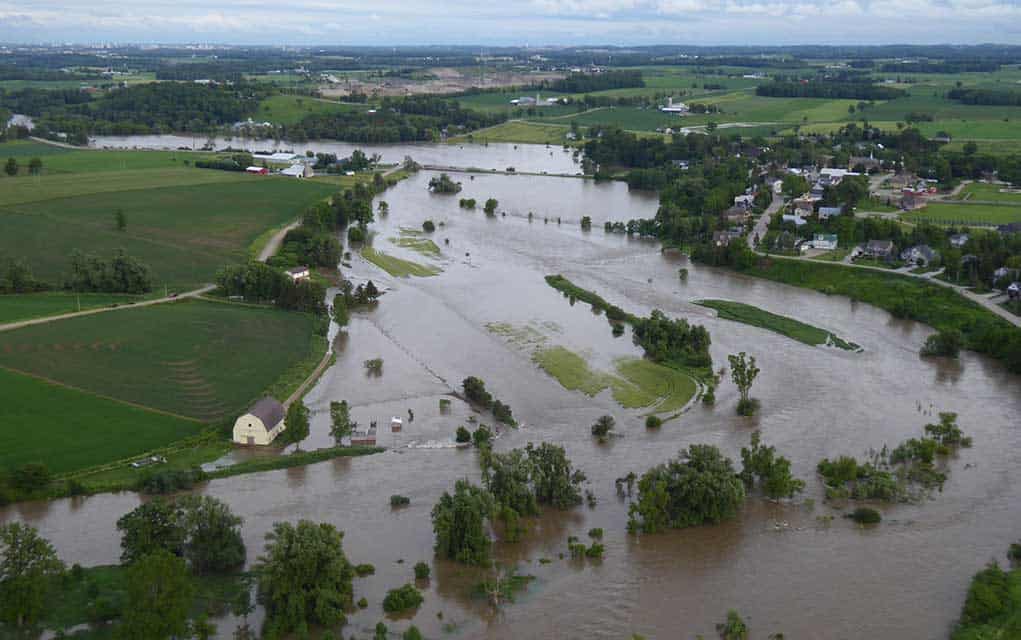
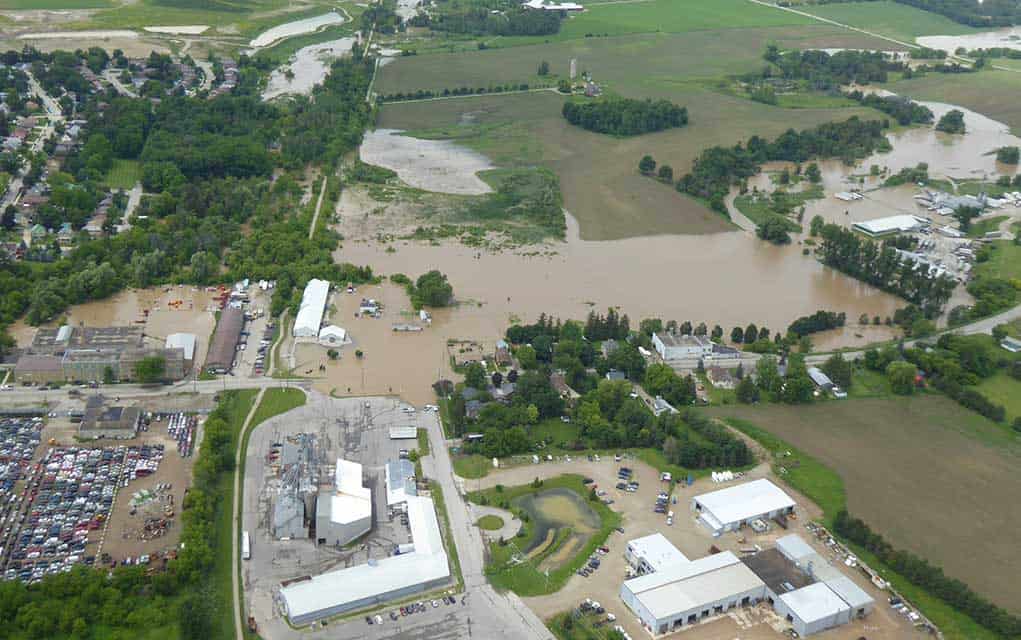
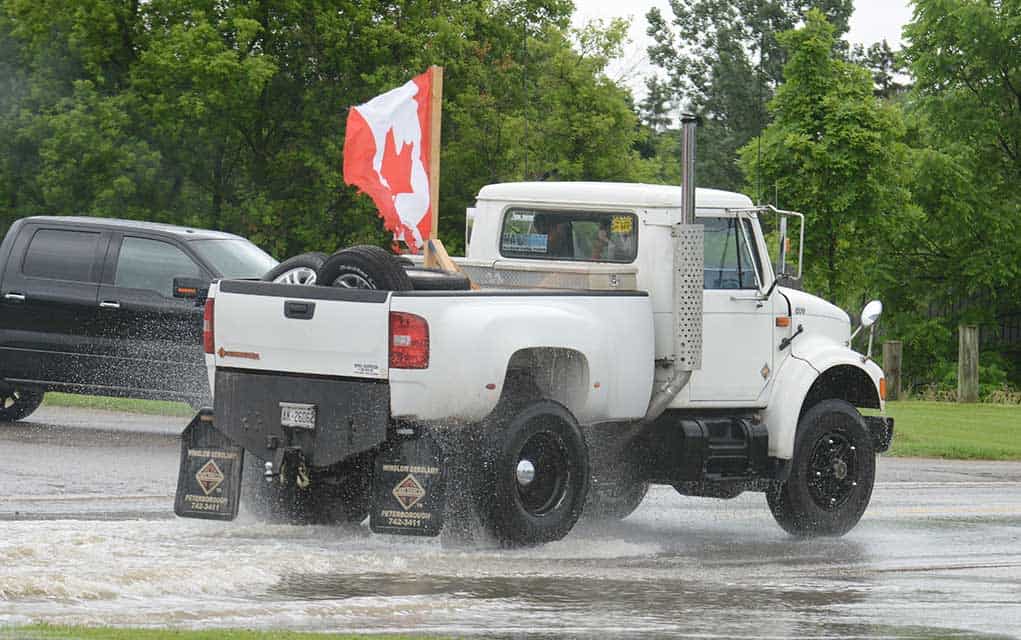
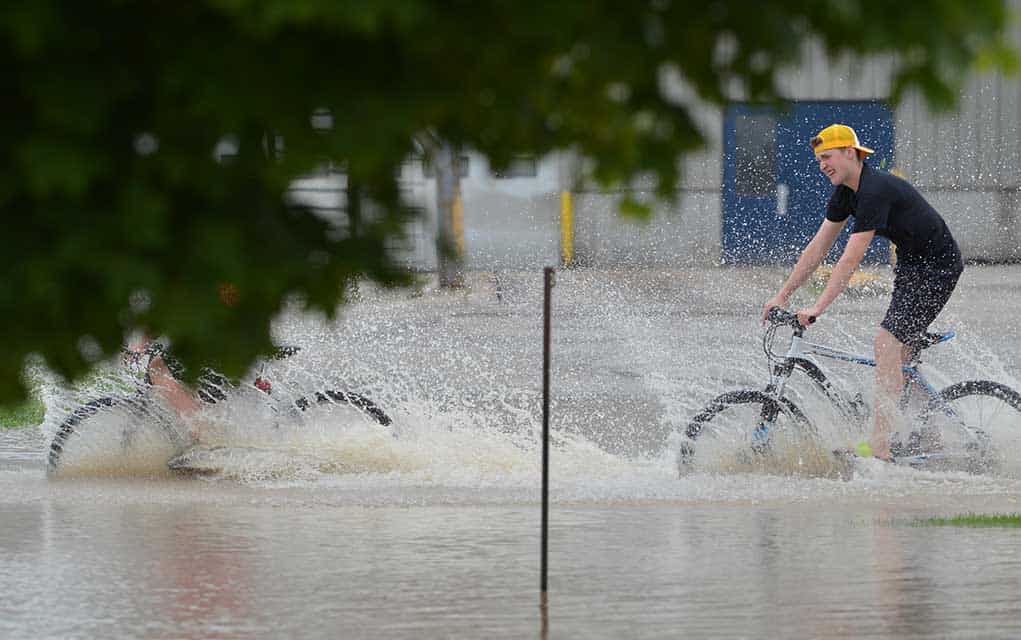
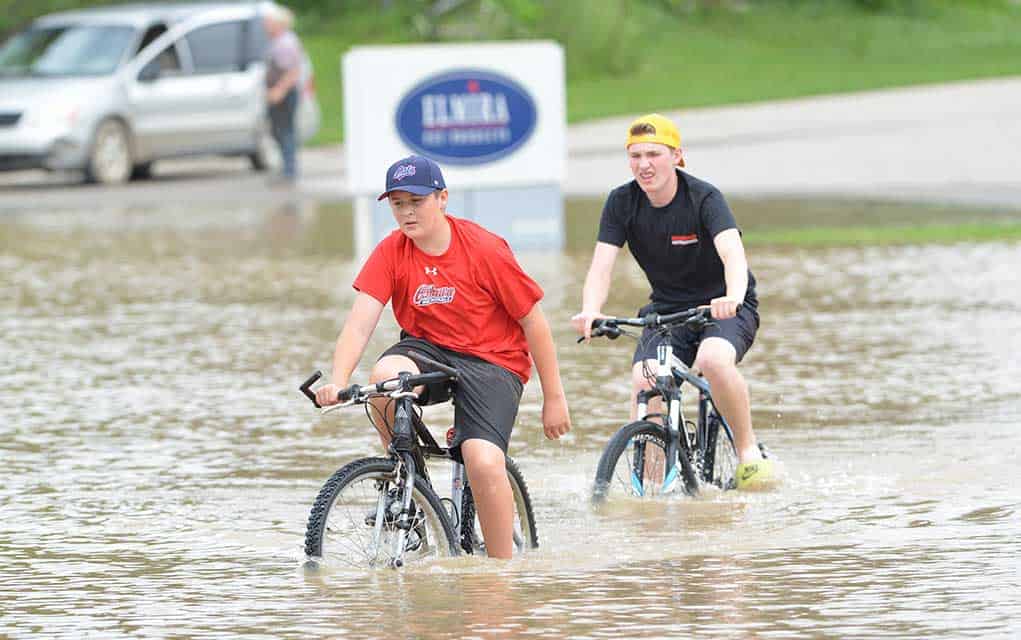
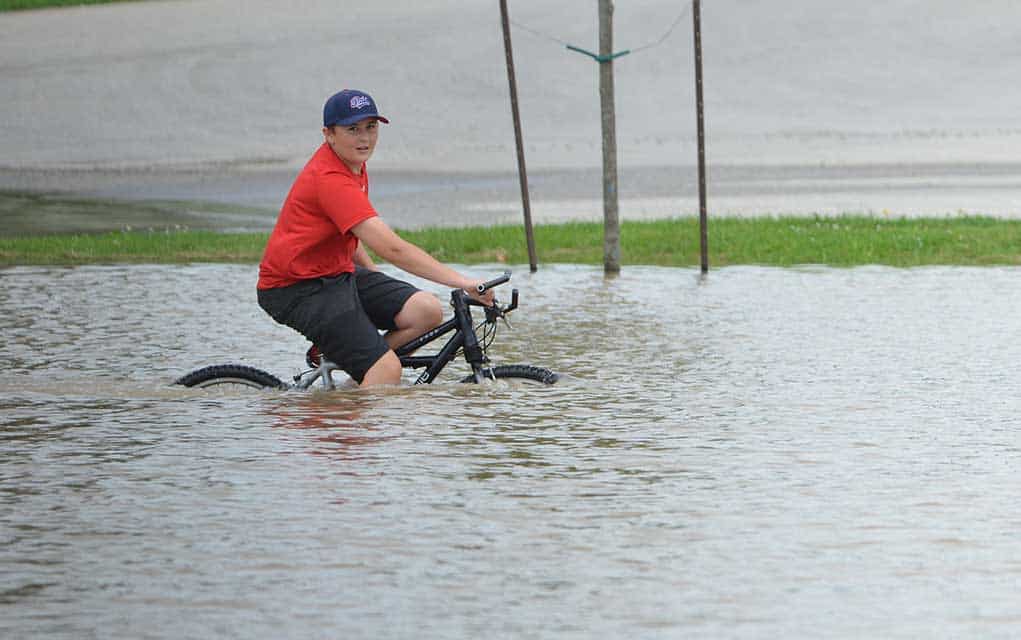
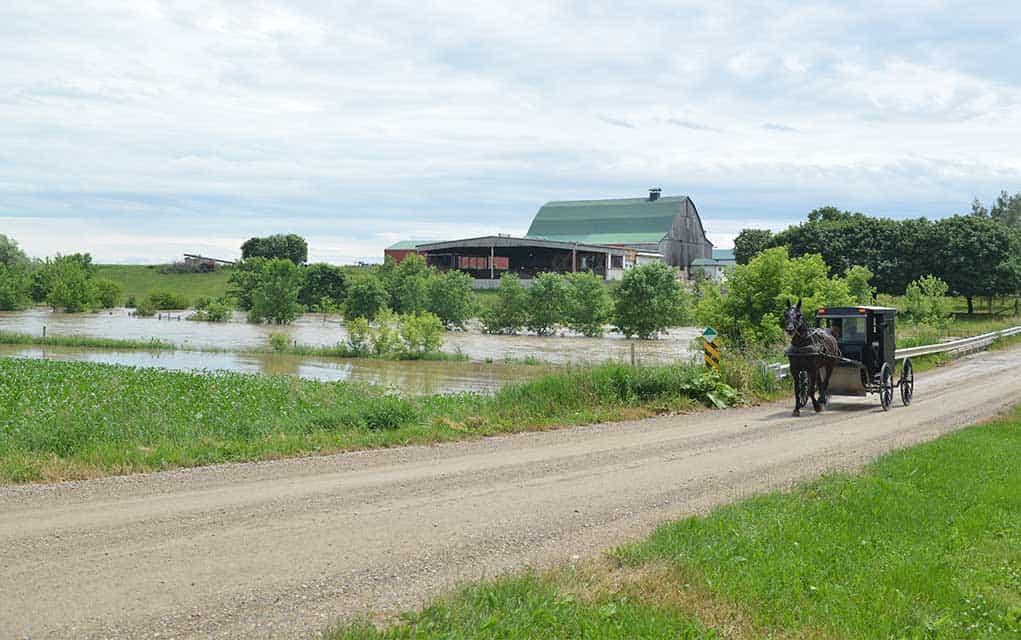
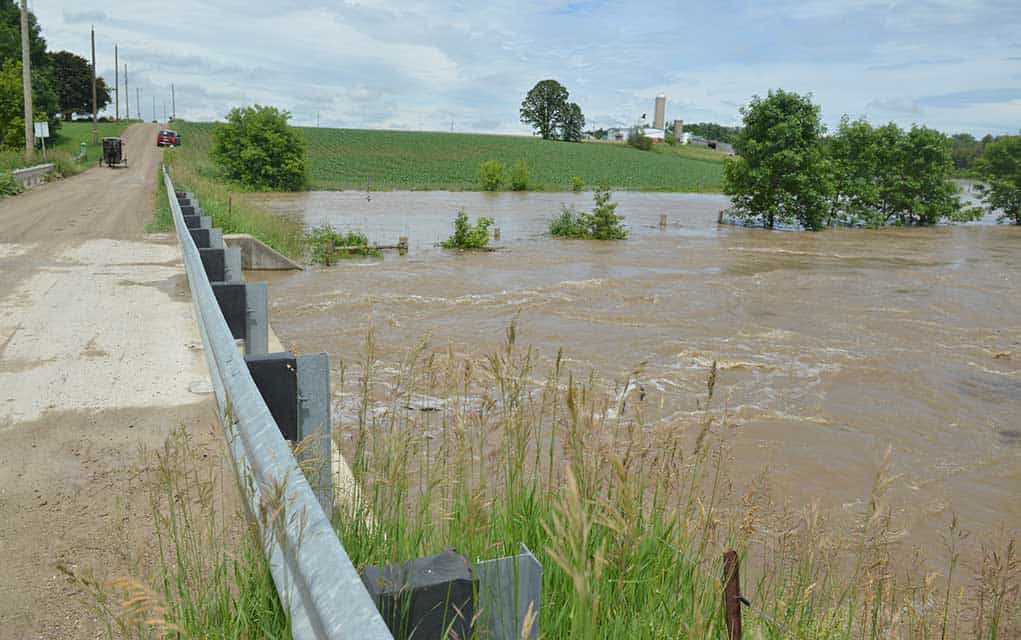
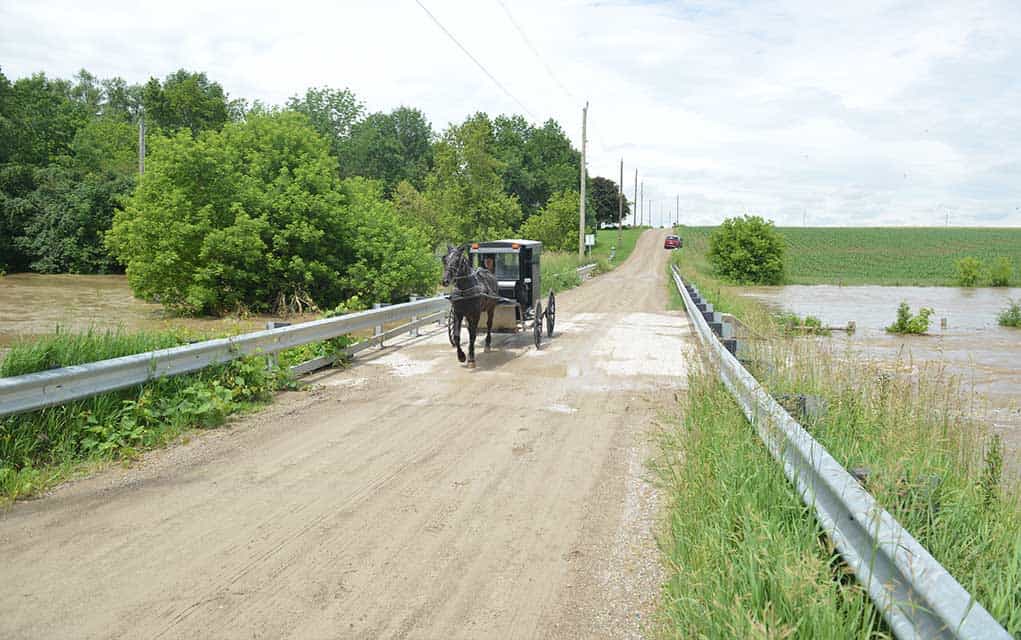
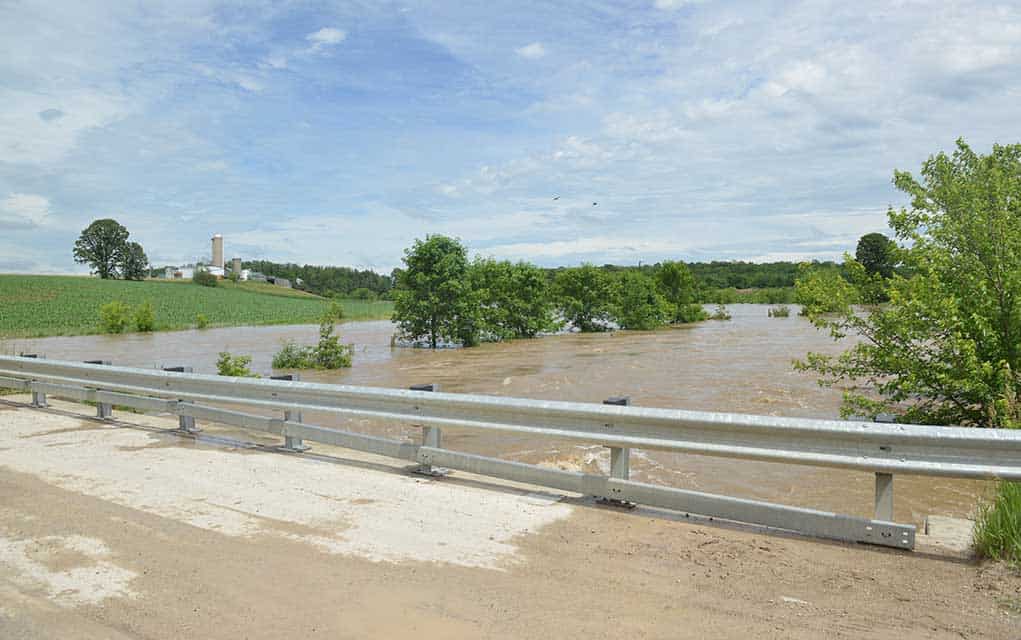
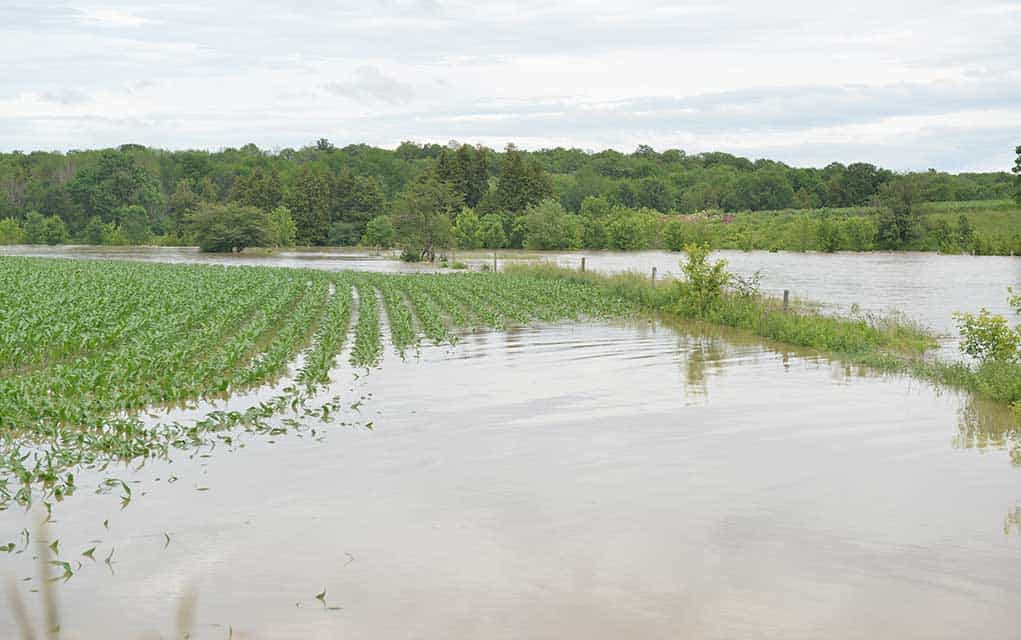
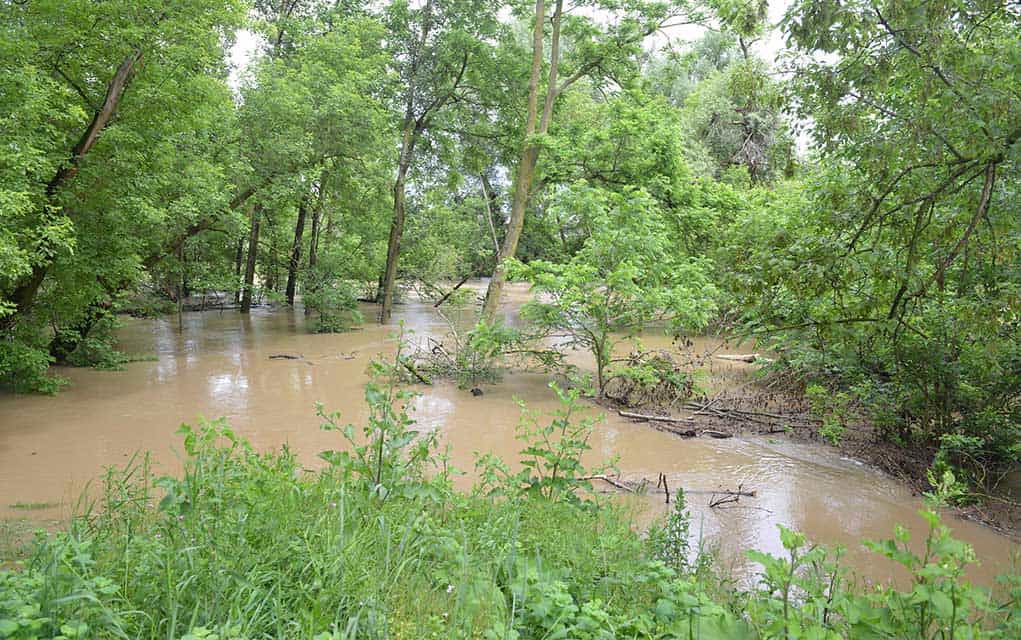
In Woolwich, the first reports came from Floradale, where a portion of Floradale Road was washed out, forcing its closure. Then came the flooding around the north end of Elmira, with the Canagagigue Creek running well over its banks to submerge Bolender Park and close a stretch of Arthur Street. Later in the day, as flows increased along the Grand and Conestogo rivers, some homes in West Montrose and Conestogo had water coming in.
The first order of business for township works and parks crews, joined by firefighters, was to barricade dangerous spots. Then, when the waters receded, to begin assessing the damage, including trails washed away.
Costs from the day of the emergency and resultant fallout are still being compiled, township chief administrative officer David Brenneman said earlier this week. When the cleanup is complete, the township can assess future remediation work that might have to be done. He’s also looking at possible relief funds from the province.
He and other Woolwich officials will be meeting with the Grand River Conservation Authority and Waterloo Regional Police on Thursday to assess what happened, including how response might be improved.

“We naturally have questions and concerns,” he said of talks with the GRCA, which is responsible for managing the Grand River watershed.
“We want to look at the answers that we have related to the flooding and the information that we received,” he added of the advance warning recieved.
For its part, the GRCA is still coming to terms with the events of last week.
The flooding was attributed to heavy rainfall in the north part of the watershed – more than 100 mm fell in the early morning hours in the vicinity of Grand Valley, prompting the release of water from the GRCA’s upstream dams.
The agency was unprepared for such a deluge, the reservoirs behind its dams already nearing capacity after a wet spring and early summer.
The forecast the night before gave no indication of such a large rainfall, said GRCA spokesman Cam Linwood. There was no chance to lower the reservoirs to increase the capacity to take in new flows.
“We had so much water coming into the reservoirs that we were essentially letting it out as fast as it came in. Our flood storage capacity was gone,” he said Monday.
Water flows along the Canagagigue were at their highest level since 1974. The same was true of the Conestogo River. Levels in the GRCA’s reservoirs were already at the upper end of the operating capacity. The large amount of rain in a short time span meant steps had to be taken, he explained
Monitoring equipment at the Luther Marsh indicated 100 to 120 mm of rain fell in a two- to three-hour period early in the morning. Water was released from the Shand Dam (Belwood Lake) and Conestogo Dam (Conestogo Lake).
The reservoirs are part of the flood-control measures employed by the GRCA, with levels typically peaking around June 1 and falling as the year rolls along.
The areas with the most rainfall saw the biggest impact – Grand Valley, Mapleton Township, Town of Minto.
“They were the areas that were directly hit the hardest.”
While the impact wasn’t as pronounced in Woolwich, crews were busy throughout the day Friday and into the weekend, as flows peaked.
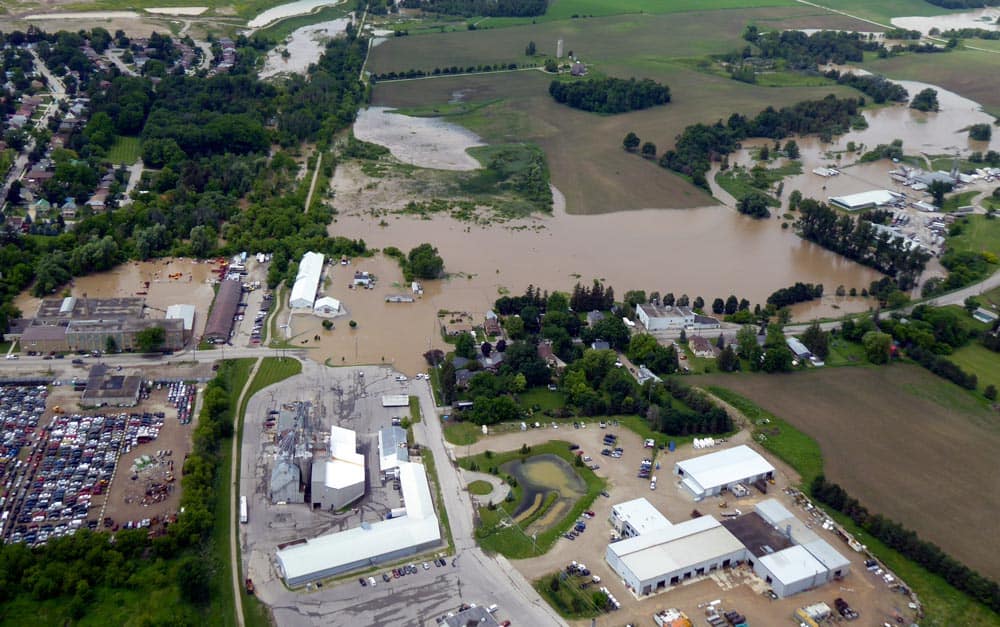
Emergency measures saw township fire chief Dale Martin hurrying from site to site, posting Floradale firefighters to block off access to a flooded Arthur Street North, organizing a rescue of two stranded kayakers in Conestogo, going door-to-door in West Montrose, among a host of stops.
The busy pace started late Friday morning with the first reports of flooding in Elmira.
“It just kept getting worse and worse. It went so fast. Even with the warning … the water came up that quickly,” said Martin of the rising water and the lack of time to deal with it.
The GRCA had warned the township of possible flooding starting at about 6:15 a.m. last Friday, however initial reports predicted a fairly routine situation calling for the closure of the low-level bridge near St. Jacobs, the moving of a few trailers at the campground in West Montrose and a warning to the golf course in Conestogo. It wasn’t until later in the morning that it became clear this was no routine event. And by mid-afternoon, water was coming in at some homes near the river in West Montrose and Conestogo.
The timeline and what steps might have helped avoid the situation will be part of the assessment process, including Thursday’s meeting of officials, said Brenneman.
Likewise, the GRCA will be doing an internal review of the incident, said Linwood.
“We’re going to look to see if we did all that we could.”
See more photos in our photo gallery.




